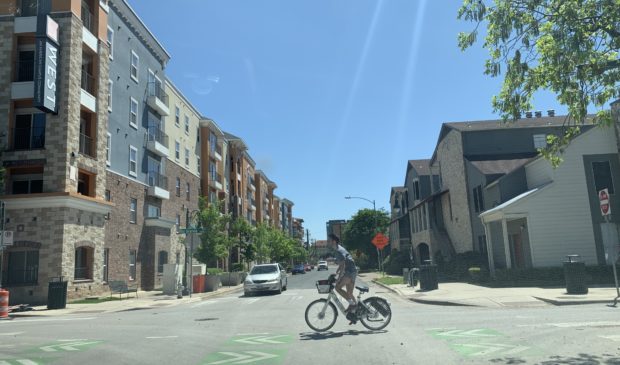Council sets its sights on affordable student housing
Tuesday, February 28, 2023 by
Kali Bramble City Council newcomer Ryan Alter is making headway, kicking off his tenure with a call for more robust housing in the increasingly unaffordable neighborhoods around Austin’s college campuses.
Alter’s resolution, which passed unanimously, directs city staff to explore partnerships and policy solutions to ramp up affordable unit production for students at UT, ACC, Huston-Tillotson, and St. Edward’s. Collaboration on university-owned land, tapping into Project Connect anti-displacement funds, and reexamining the University Neighborhood Overlay plan are all on the table.
“It’s important to remember that students are uniquely situated when it comes to some of these challenges,” Alter said. “If we want people to come to Austin and choose to attend any of our colleges and universities … (and) they can’t afford to live near campus or even in this city, then we stand to lose a lot of what makes Austin special.”
While Council set an ambitious target of 135,000 (varyingly) affordable units in 10 years in 2017’s Strategic Housing Blueprint, quotas for those below 80 percent median family income are lagging far behind schedule. For lower-income students, this can mean being priced out to increasingly further distances, creating challenges that can impact academic performance.
Currently, incentives for affordable development are baked into the University Neighborhood Overlay, which affords additional density in exchange for mandated affordability requirements or payment-in-lieu to the district’s housing trust fund. While the district has spawned a number of housing projects like the Ruth Schulze co-op in West Campus, groups like the city’s College Student Commission say demand continues to outpace resources.
Ryan Alter’s resolution asks the city to expand its toolkit, with projects like the graduate student housing development on UT-owned land in East Campus and collaboration between Austin’s Economic Development Corporation and Huston-Tillotson University as examples of new possibilities. Staff will also explore Land Development Code solutions, both in the existing UNO district and near other campuses across the city.
Staff will also consider leveraging funding set aside for Project Connect, which is slated to bankroll $300 million in housing and nonprofit projects as part of its anti-displacement campaign. Alongside Capital Metropolitan Transportation Authority’s ambitious expansion plans, such projects could serve to better accommodate transit-dependent students while advancing the city’s affordability and mobility goals.
Austin Cooperative Business Association member Ryan Nill offered an additional solution, noting that the city’s student housing cooperative system boasts one of the few existing alternatives to increasingly costly rental units.
“For a long semester, it costs half as much to live in ICC Austin than it does to live in the UT dorms or a West Campus apartment, but it’s not easy to build,” Nill said. “If a community can bring together the resources to start them, then they can essentially live forever without subsidy, but it’s incredibly difficult to get them off the ground without some sort of community support.”
The city manager will bring back some ideas, along with a fiscal impact statement, before the end of the year.
Photo by Vuemobi, CC BY-SA 4.0, via Wikimedia Commons.
The Austin Monitor’s work is made possible by donations from the community. Though our reporting covers donors from time to time, we are careful to keep business and editorial efforts separate while maintaining transparency. A complete list of donors is available here, and our code of ethics is explained here.
You're a community leader
And we’re honored you look to us for serious, in-depth news. You know a strong community needs local and dedicated watchdog reporting. We’re here for you and that won’t change. Now will you take the powerful next step and support our nonprofit news organization?






